Google’s Helpful Content Update rolled out in August 2022 but is still impacting sites.
In this article, I’ll explain the purpose of the update, how it’s impacted search, and how it works.
Plus, I’ll go over what you can do to prevent your site from being penalized by the ongoing ramifications of this update.
Let’s start with the basics.
In This Article
What is the Google Helpful Content Update?
Google’s Helpful Content Update is a system designed to elevate helpful and original content and to suppress unoriginal or poor-quality content.
It represented an advancement of Google’s long-term commitment to prioritize quality content.
In Google’s words, this update provided a better way to identify pages that are “unhelpful, have a poor user experience or feel like they were created for search engines instead of people.”
Google elaborated on that last point: the update targeted “content that seems to have been primarily created for ranking well in search engines rather than to help or inform people.”
Incorporated into the Core Ranking System
Since the update was launched it’s been incorporated into Google’s core ranking system.
In fact, when Google announced the big March 2024 core update, they emphasized that HCU has been made part of the core update system.
Not surprisingly, the goal of the March update was “to reduce the amount of low-quality content on Search and send more traffic to helpful and high-quality sites.”
So you can expect that the Helpful Content Update’s classifiers and signals will continue to impact rankings.
- What’s a classifier? It’s a machine learning model that is used to categorize and understand the content and intent of web pages and search queries.
- What’s a signal? A signal is any factor or piece of information that Google uses to determine the relevance, quality, and ranking of a web page for a specific search query.
How the Helpful Content Updates Works
Understanding how Google’s Helpful Content Update works will provide insights into creating content that ranks
Here's how the Helpful Content Update works:
- Identifying unhelpful content: Google uses machine learning classifiers to identify content that seems to have been created primarily for search engine rankings rather than to help people. This could include content that is low in quality, unoriginal, lacking in substance, or written to manipulate search rankings.
- Site-wide signal: If a significant portion of a website's content is deemed unhelpful by the classifier, it triggers a site-wide signal. This means that the rankings of the entire site could be negatively impacted, not just the individual pages with unhelpful content.
- Automated and ongoing: The Helpful Content classifier runs continuously, automatically identifying and evaluating content. As a website's content changes over time, the signal can be applied or lifted accordingly.
- Rewards people-first content: The update rewards helpful content that demonstrates first-hand experience and/or expertise. Content that provides original insights, comprehensive coverage of a topic, and a satisfying user experience is more likely to succeed.
- Part of a broader algorithm: The Helpful Content signal is one of many signals Google uses to rank web pages. It works in conjunction with other factors like relevance and quality to determine the overall ranking of a page.
Insights from the March 2024 Core Update
As mentioned, the March update was designed to further the goals of the original Helpful Content Update.
In its announcement of the March update, Google also pointed to new spam policies.
Here are some highlights.
Using AI to Generate Massive Amounts of Spammy Content
Notably these included “scaled content abuse” or the use of automated tools, like generative AI, to produce massive amounts of bland content.
In the wake of the release of ChatGPT and similar tools, X (Twitter) influencers boasted of their “wins” in quickly scaling up content, only to see their hockey-stick charts fall off a cliff.
The end. 🤷♂️ https://t.co/Swwip8IuAv pic.twitter.com/rYxogck4Pw
— Tim Soulo 🇺🇦 (@timsoulo) January 3, 2024
Expired Domain Abuse
This is purchasing an expired domain with a high DA score then using it to host spammy content.
I covered a key aspect of this in my June 2023 article on paid links. In short, link sellers “will buy high DA domains that have recently expired. Then they fill the site with low-quality junk from anyone who wants a guest post and a link.”
Scraped Content Sites
Here, Google’s aiming for sites that scrape content from others sites and republish it with no added value.
Now, let’s look at how you can optimize your site for ongoing core updates that feature the Helpful Content Update classifiers.
How to Optimize for the Helpful Content Update
Our recommendations span planning, content creation, and on-page SEO.
WordPress users can simplify much of the on-page work by using an SEO plugin. We recommend All in One SEO because it’s easy to use, low-cost, and comes packed with features.
All in One SEO (AIOSEO) is an established plugin with thousands of 5-star ratings on WordPress.org. You can download AIOSEO here.

In this list, where relevant, I’ll cite ways to use AIOSEO to make your SEO work easier.
Realize that the plugin will analyze all your pages and provide specific ways to improve their SEO. You’ll find these recommendations in the AIOSEO sidebar.
Learn more in our guide to On-Page SEO.
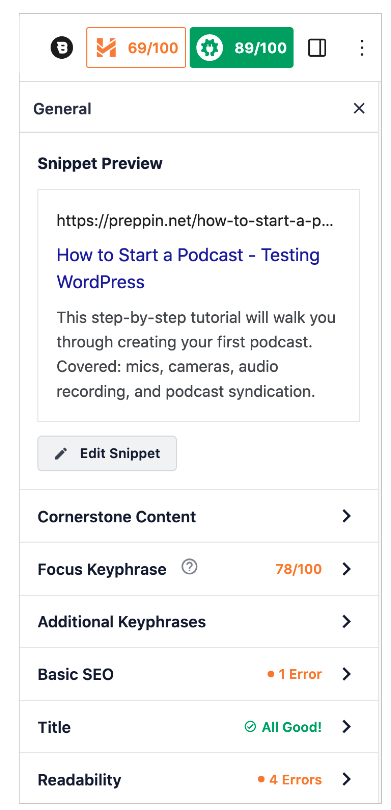
1. Prioritize User Needs
Before creating content, consider what your target audience is looking for when they use the keyword your article is based on. Aim to provide the best possible answer or solution to their needs.
The jobs-to-be-done framework and search intent can help you identify those needs.
Also consider any related People Also Ask questions that appear in searches for your keyword.
These are clues about what people want to know. Answering a few of these questions in your content can help you serve your readers.
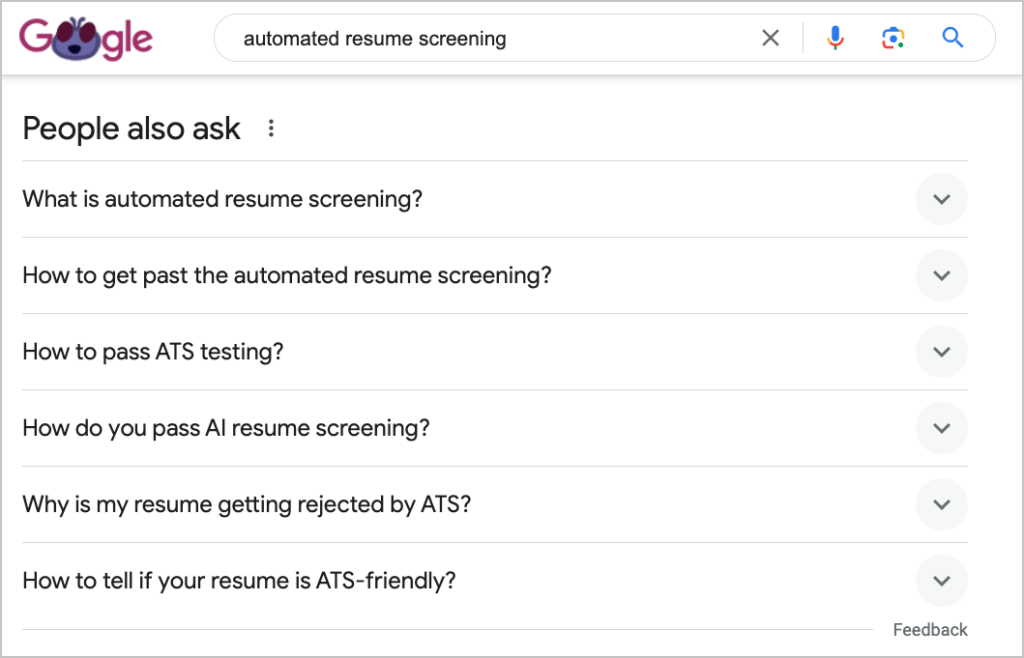
2. Demonstrate Personal Experience or Expertise
Ensure your content reflects genuine expertise, experience, and first-hand knowledge of the topic.
Provide original insights and go beyond surface-level information.
Merely synthesizing the views of others without adding value won’t be sufficient.
For reviews, provide proof (such as images or video) that you’ve used the product or service.
- Here’s an example of a guitar review featuring many photos that are sufficient to prove the writer possessed the guitar.
- You can post a review to YouTube then embed the video on your website’s review page . That gives you 2 opportunities to rank.
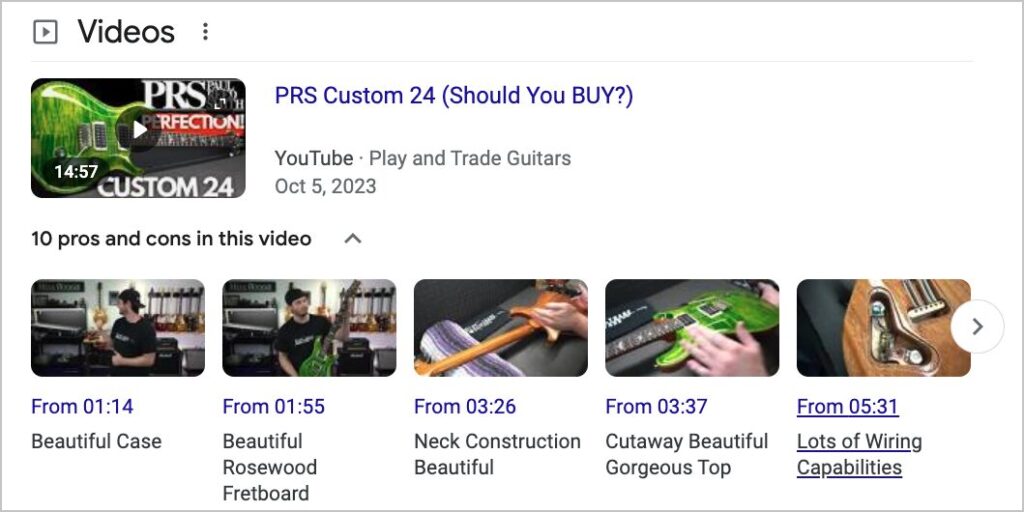
When writing reviews, consider using 1st-person pronouns. A study by Zyppy SEO found that 1st-person pronouns were the biggest factor for sites that gained from the Helpful Content Update.
And browse this content checklist from Google.
3. Communicate Your Expertise
Next, communicate your expertise to your readers and to Google. Don’t assume that Google or your users know anything about your background.
Here you can use AIOSEO’s Author SEO feature. It’s a simple way to broadcast your expertise.
First, an author byline hyperlink will be added to every article. Each author’s byline will automatically link to a page listing all of their work.
You can also add a reviewer or fact-checker byline too. This can help communicate that an editorial process is in place.
More to the point, an author box, with a short bio, areas of experience or expertise, and social media links (if desired) will appear at the bottom of each article.

The author’s article listing page can feature a more detailed bio including employer information, career highlights, education, and more.
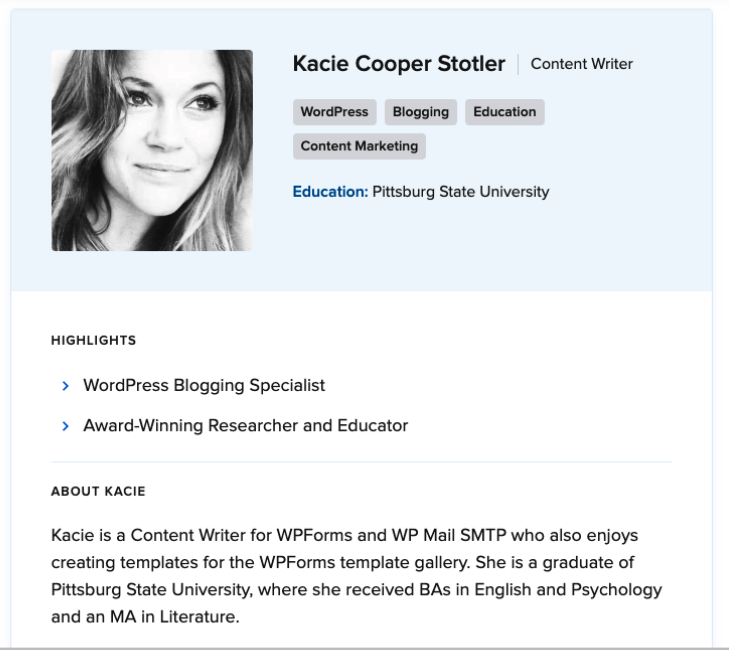
To be clear, the Author SEO feature won’t necessarily boost rankings. It helps you communicate the personal experience or expertise that already exists among your authors.
This is part of satisfying Google’s interest in seeing EEAT, an acronym for Experience, Expertise, Authority, and Trustworthiness.
Learn more in EEAT and YMYL: An SEO Guide.
4. Authority and Trustworthiness
Next, consider why people should trust your site or products. Then communicate that clearly.
Both users and Google will get the message.
- Highlight the experience of staff or board members with About pages.
- Be transparent about pricing, refunds, guarantees, and checkout security.
4. Be Comprehensive When Warranted
Aim to cover a topic comprehensively, if warranted, providing all the information a user might need to fully understand or solve their problem. Avoid thin or duplicative content.
There are some cases where, given the topic, comprehensive coverage isn’t warranted. By exploring the top-ranking articles for the topic, you’ll get clues as to how comprehensive you need to be.
Also helpful: Try searching for your topic with Globe Explorer. It’s free. You’ll find an outline displayed in the left-hand column that provides sub-topics. This can guide you in creating a comprehensive article.
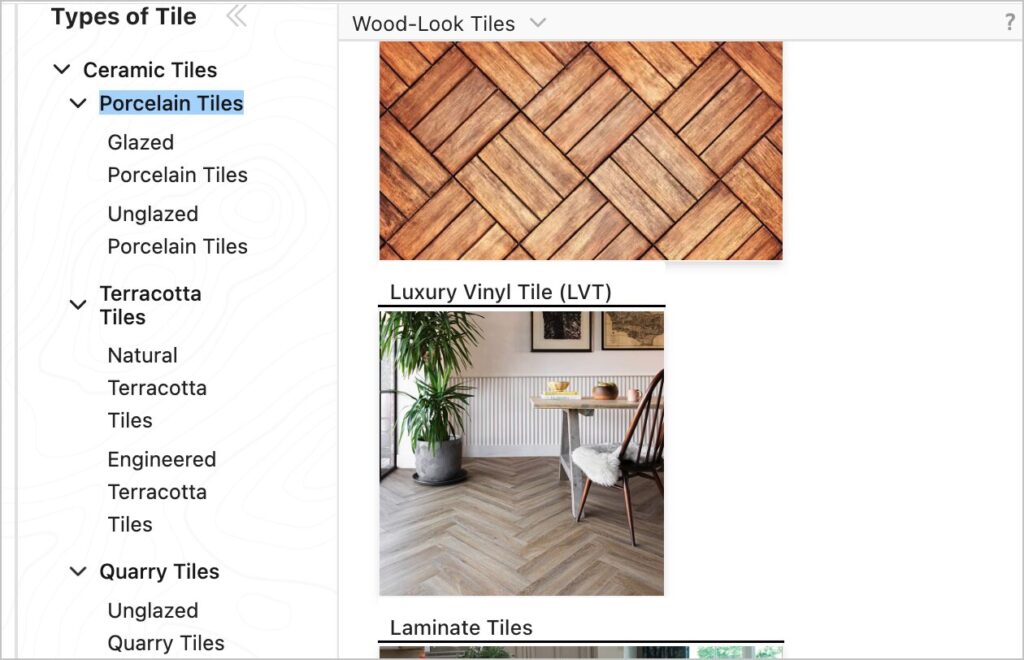
5. Write for People, Not Search Engines
This may sound counter-intuitive, but it’s true. The more your content is helpful to users, the better it will rank. Google prioritizes helpful content. So by focusing on that, your search engine rankings will take care of themselves.
Specifically, focus on creating content that is easy to read, engage with, and share.
Don’t aim for any particular word count and try to be as concise as possible. Readers don’t want to waste their time. Research has shown they typically scan a page rather than reading it word-for-word.
Use plain language and avoid keyword stuffing or other tactics designed to manipulate search rankings.
Here, All in One SEO comes in handy. Once you add your article to the WordPress editor, AIOSEO will analyze your page and make suggestions for improvement.
AIOSEO includes readability recommendations. These include:
- Flesch Reading Ease Score: This tells you how easy your content is to read.
- Subheading distribution: Breaking up your text with subheadings makes it easier to read, especially on mobile devices.
- Short paragraphs and sentences: AIOSEO will check to make sure you’re following this guidance.
- Use of relevant images or videos: This can keep readers’ attention.
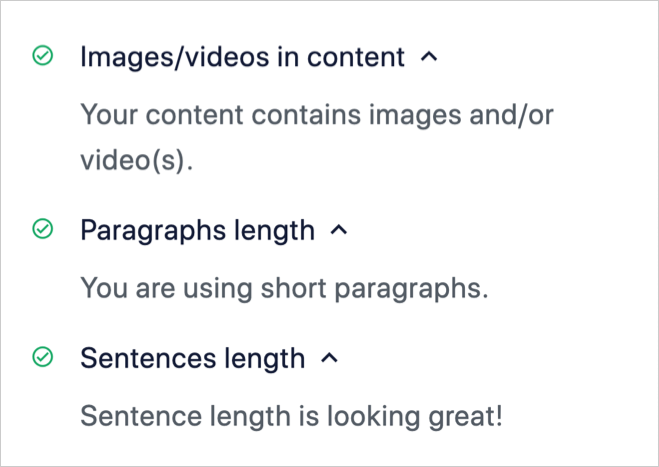
Most of these checks also ensure that your content is scannable.
5. Provide a satisfying user experience
Ensure your content is well-organized, visually appealing, and easy to navigate.
Optimize for fast page load times and mobile-friendliness. WordPress users can simply choose a theme that’s already coded to load fast.
Some quality options are SeedProd, Blocksy, and GeneratePress.
6. Generate Trust
Back up your claims with authoritative sources, cite your references, and be transparent about your processes, services, or products.
Local businesses may benefit from sharing information about their community involvement.
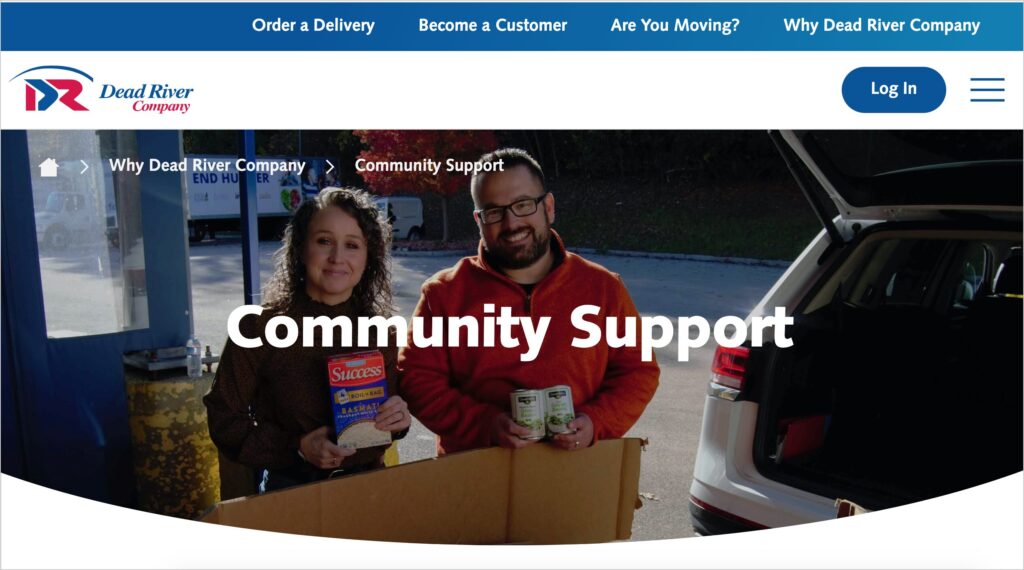
In addition, getting your business vetted by a data aggregator can generate trust by Google. The process is easy and the data will trickle down to vehicle GPS systems.
And, getting listed in business directories, will increase trust by readers and Google.
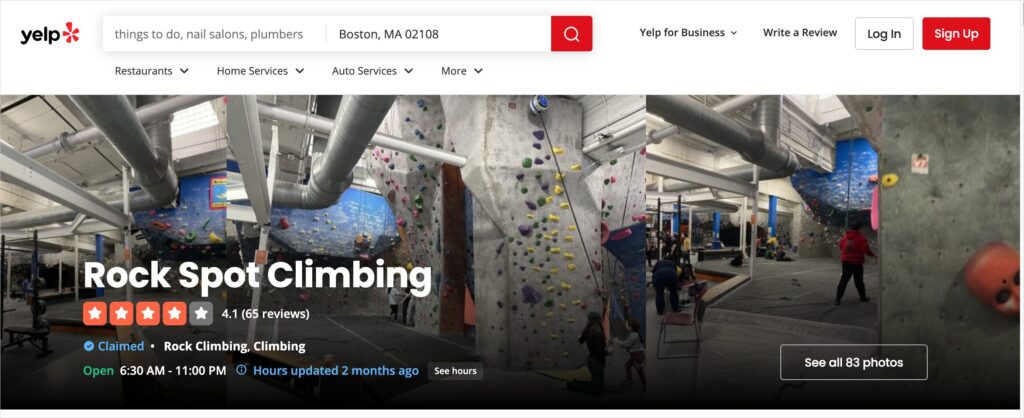
In addition, local businesses should ensure their NAP (contact information and operating hours) is consistent across the web. The last thing you want is someone showing up at your “24-hour” restaurant only to find out you’ve reduced hours.
Learn more in Local SEO Citations.
7. Regularly update and improve content
Keep your content fresh and relevant by updating it regularly with new insights, data, or examples. Continuously work to improve the quality and user experience of your existing content.
Content decay, or losing rankings is natural. Here, using AIOSEO’s Search Statistics can be helpful. It will identify which articles are slipping in rankings so you know what to prioritize.
8. Avoid Spammy Use of AI
Google doesn’t penalize AI-generated content, as long as it meets search intent and is high-quality.
To reach that bar, you’ll need to have a significant human contribution to that content.
Recall the importance that Google puts on personal experience and expertise. Generative AI doesn’t have any personal experience or career expertise.
Keep in mind that Google has stated that AI-generated content, designed primarily for search engine manipulation, is considered spam and may be penalized.
Learn more in our guide to AI-Generated Content.
9. Take a holistic approach
Ensure that your entire website provides a helpful, satisfying user experience. And keep in mind that the Helpful Content Update classifier operates both on the page level and site-wide level.
If your site has a significant amount of unhelpful content, such as from a user forum, this can trigger a red flag and lead to lower rankings for your entire site.
Likewise, if at some point you changed the mission and focus of your website, you may have a lot of irrelevant content.
This is a good time to identify and root out problematic content.
Some of that content may need to be deleted, while thin content pages on the same topic, might be able to be combined into 1 comprehensive article.
Remember, the Helpful Content Update is just one part of Google's broader efforts to reward high-quality, user-centric content.
By consistently focusing on providing value to your audience, you can build a sustainable and successful content strategy that aligns with Google's goals and best practices.
Discover the Impact of Google Updates on Your Site
There are a couple of ways to assess the impact of Google updates on your site.
You can use a free Google Search Console account and check your keyword rankings in the wake of an update.
You can also use the Elite version of AIOSEO to take advantage of the Search Statistics feature.
With it you can see when a Google algorithm update occurred and how it impacted your rankings.

Q&A on the Helpful Content Update
How can I recover when my site’s ranking is hit by the Helpful Content Update?
First, to reiterate, the Helpful Content system has been absorbed into Google’s core algorithms. So no future update will be called a “Helpful Content Update.”
That said, the signals and classifiers from HCU are informing core updates.
If your website has been negatively impacted by a lack of helpful content, the path to recovery involves identifying and addressing the issues that may have triggered Google’s algorithms.
Steps to Recovery
Here are some steps you can take to recover:
- Audit your content: Conduct a thorough audit of your website's content to identify pages that may be considered unhelpful or unsatisfying to users. Look for content that is thin, duplicative, or written primarily for search engines rather than people.
- Remove or improve low-quality content: Based on your audit, either remove the identified low-quality pages entirely or significantly improve them to provide genuine value to users. If you choose to improve the content, ensure it’s comprehensive, is written by an individual with relevant experience, and is people-centric.
- Prioritize quality over quantity: Focus on creating high-quality, in-depth content that satisfies user needs, rather than churning out a large volume of shallow or unhelpful content.
- Optimize for user experience: Ensure your website provides a smooth, intuitive, and satisfying user experience. Improve navigation, page load times, mobile-friendliness, and overall design to keep users engaged and satisfied.
- Get user feedback: Gather feedback from your target audience to better understand their needs, preferences, and pain points. Use this feedback to inform your content strategy and continuously improve your content's helpfulness.
- Diversify your traffic sources: While working to recover your organic search rankings, explore other traffic channels like social media, email marketing, and paid advertising to maintain sales and growth.
- Be patient: Recovering from a Helpful Content Update impact can take time. The site-wide signal is evaluated continuously, and it may take several months for improvements to your content to be fully recognized and reflected in your search rankings.
- Adopt a long-term, user-centric mindset: Commit to consistently creating content that genuinely helps and informs your target audience. This approach aligns with Google's long-term goals and can help you achieve your website goals.
- Monitor your progress: Regularly monitor your website's search performance, user engagement metrics, and overall content quality. Use tools like Google Search Console and Google Analytics to track your progress and identify areas for ongoing improvement.
High-Quality, People-First Content
Remember, the Helpful Content Update is designed to reward websites that consistently provide high-quality, people-first content.
By focusing on the needs of your users and continuously improving your content, you can recover from any negative impacts and build a stronger, more resilient website over time.
How can I identify unhelpful content?
To identify unhelpful content, review the guidelines in this article. Often “unhelpful” is consonant with low-quality. Review your content and ask if it’s rambling, contains errors or typos, or is formatted in a way that’s hard to read online (e.g., long blocks of text, few or no subheadings.)
Ultimately unhelpful relates to the searcher’s intent. When they’re searching for the keyword that your article is based on, what do they want to know? Be sure to consider any related People Also Ask questions, when creating articles.
After Optimizing for the Helpful Content Update Signal
Now that you know what the Helpful Content Update is, how its classifiers and signals were subsumed into core updates, and how to optimize for it, what’s next?
Check out these 10 ranking factors to optimize for. And take a closer look at doing on-page SEO with the All in One SEO plugin.
Come join us on our YouTube Channel to find simple WordPress SEO tutorials. You can also follow us on X (Twitter), LinkedIn, or Facebook to stay in the loop.
Disclosure: Our content is reader-supported. This means if you click on some of our links, then we may earn a commission. We only recommend products that we believe will add value to our readers.

